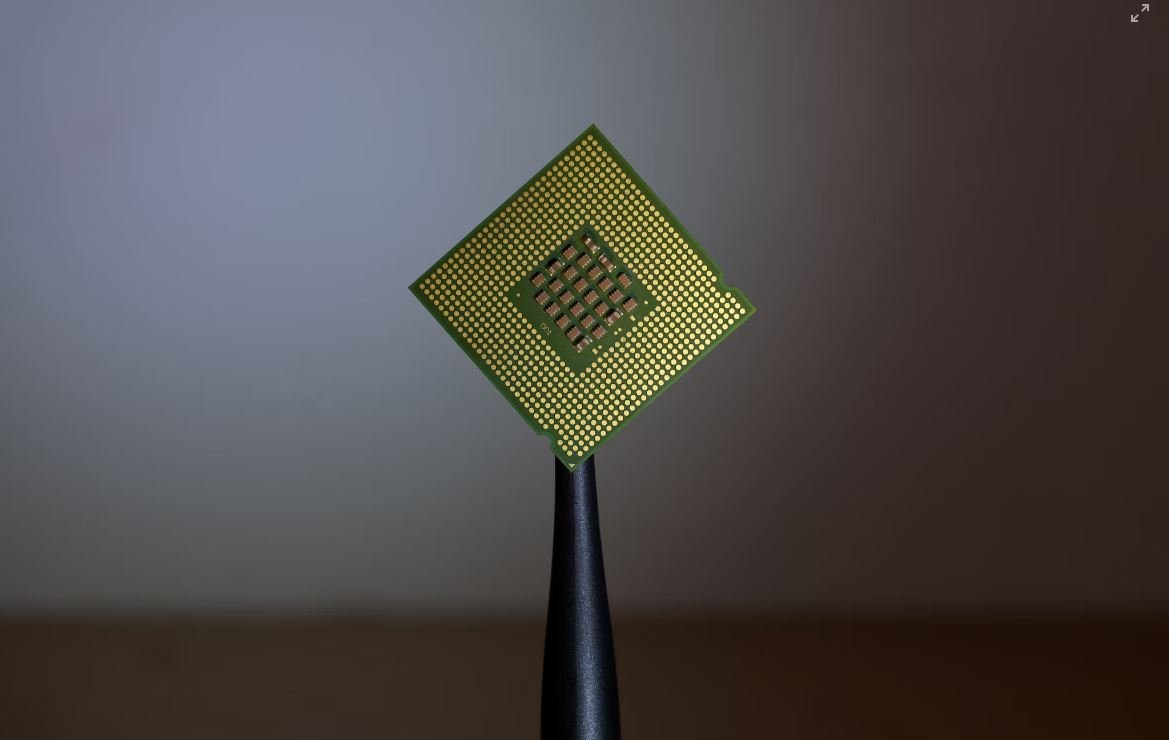What Is Hugging Face Transformers
The Hugging Face Transformers library is a popular open-source Natural Language Processing (NLP) library that provides pre-trained models and tools for building state-of-the-art natural language understanding systems. It offers a wide range of transformer models that excel in various NLP tasks such as text classification, question answering, machine translation, and more. With its user-friendly interface and extensive documentation, Hugging Face Transformers has become a go-to resource for NLP practitioners and researchers.
Key Takeaways
- Hugging Face Transformers is an open-source NLP library.
- It provides pre-trained models for various NLP tasks.
- The library is widely used and has extensive documentation.
Hugging Face Transformers provides a simple and efficient way to utilize transformer models in your NLP projects. These models, such as BERT, GPT, and RoBERTa, have achieved remarkable results in a wide range of NLP benchmarks, making them invaluable tools for anyone working in the field.
Getting Started with Hugging Face Transformers
To get started with Hugging Face Transformers, you can install the library using pip:
pip install transformers
Once installed, you can import the library and load pre-trained models with just a few lines of code. Here’s an example of how to use the BERT model for text classification:
from transformers import BertModel, BertTokenizer
tokenizer = BertTokenizer.from_pretrained('bert-base-uncased')
model = BertModel.from_pretrained('bert-base-uncased')
input_text = "Hello, how are you today?"
encoded_input = tokenizer(input_text, return_tensors='pt')
output = model(**encoded_input)
- Install the transformers library using pip.
- Import the necessary modules and load the desired pre-trained model and tokenizer.
- Tokenize your input text using the tokenizer.
- Pass the tokenized input through the model and obtain the output.
Transformer Model Comparison
| Model | Architecture | Input Length |
|---|---|---|
| BERT | Transformer | 512 |
| GPT | Transformer | 1024 |
Table 1: Comparison of transformer-based models supported by Hugging Face Transformers library.
Table 1 shows a comparison of some popular transformer-based models supported by the Hugging Face Transformers library, along with their respective architectures and maximum input lengths. These models have different strengths and are suitable for different NLP tasks based on the desired input length and complexity.
Advantages of Using Hugging Face Transformers
- Wide range of pre-trained models available.
- Easy integration with existing NLP pipelines.
- Improved model performance with fine-tuning.
Hugging Face Transformers brings numerous advantages to NLP practitioners and researchers. It offers a wide range of pre-trained models that can be easily integrated into existing NLP pipelines. By fine-tuning these models on specific tasks and domains, researchers can achieve even better performance and higher accuracy.
Hugging Face Transformers Community
| Platform | Statistics |
|---|---|
| GitHub | 63k+ stars |
| Forum | 42k+ members |
Table 2: Community statistics for Hugging Face Transformers platform.
Table 2 highlights the impressive community support for Hugging Face Transformers. With over 63k stars on GitHub and a thriving forum with 42k+ members, the library benefits from a strong community of developers, researchers, and NLP enthusiasts who actively contribute to its growth and improvement.
In conclusion, Hugging Face Transformers is a powerful NLP library that offers pre-trained models and tools for a wide range of NLP tasks. Its ease of use, extensive documentation, and strong community support make it an indispensable resource for anyone interested in building state-of-the-art NLP systems.

Common Misconceptions
1. Transformers are only used for movie franchises
One common misconception people have about Hugging Face Transformers is that they are solely used for creating popular movie franchises. However, Transformers in the context of natural language processing (NLP) refers to a type of model architecture used for various NLP tasks, such as text classification, language translation, and sentiment analysis. It is not limited to the movie-related content.
- Transformers are widely used in machine learning for NLP.
- They can be applied to a wide range of tasks, including text summarization and question-answering.
- Hugging Face Transformers provide pre-trained models that can be fine-tuned for specific NLP tasks.
2. Transformers can only understand English
Another misconception is that Transformers can only understand the English language. While English is commonly used in training and evaluating NLP models, Transformers are not limited to this language. In fact, Hugging Face Transformers support a wide range of languages, including but not limited to Spanish, French, Chinese, German, and many more.
- Hugging Face Transformers provide models trained on various languages.
- They can handle multilingual tasks, such as translation between different languages.
- Transformers have been widely used in research and applications involving non-English languages.
3. Transformers can fully understand the meaning of text
While Transformers have achieved impressive results in various NLP tasks, they still have limitations in fully understanding the meaning of text. Transformers excel at capturing contextual information and patterns in text data, but they lack comprehensive knowledge and reasoning capabilities. They can struggle with understanding sarcasm, metaphors, and context-dependent meanings.
- Transformers are powerful at modeling contextual relationships in text data.
- They can accurately predict the sentiment or category of text.
- However, they may face challenges in understanding figurative language or nuanced meanings.
4. Transformers can only be used for text classification
There is a misconception that Transformers can only be used for text classification tasks, such as sentiment analysis or topic categorization. While Transformers can indeed be applied to these tasks, they have much broader applications. They can also be used for machine translation, text generation, summarization, and even question-answering.
- Transformers are versatile and can be fine-tuned for various NLP tasks.
- They can generate human-like text or summarize long articles.
- Transformers have been used in chatbots and virtual assistants, enabling interactive and dynamic conversations.
5. Transformers replace human intelligence
Lastly, some people may have the misconception that Transformers replace the need for human intelligence in NLP tasks. While Transformers have significantly advanced the field of NLP and automated many aspects of language processing, they are not meant to replace human intelligence entirely. Human judgment and understanding are still crucial for certain complex tasks, such as legal document interpretation, critical analysis, and creative writing.
- Transformers enhance human capabilities in processing and analyzing large amounts of text.
- They automate repetitive tasks and provide efficient solutions.
- However, they cannot fully replace the need for human expertise and understanding in complex contexts.

The History of Natural Language Processing
Natural Language Processing (NLP) is a subfield of artificial intelligence that focuses on the interaction between humans and computers through natural language. It has evolved significantly over the years. The table below presents a timeline of important milestones in the history of NLP.
| Year | Milestone |
|——|———–|
| 1950 | The Turing Test proposed by Alan Turing. |
| 1956 | The field of Artificial Intelligence is established at the Dartmouth Conference. |
| 1961 | ELIZA, the first chatbot, is created by Joseph Weizenbaum. |
| 1971 | SHRDLU, an early natural language understanding program, is developed. |
| 1990 | The WordNet lexical database is released, facilitating language understanding. |
| 1997 | IBM’s Deep Blue defeats world chess champion Garry Kasparov. |
| 2003 | The Aligning Speech and Text project develops systems to convert speech to written text. |
| 2011 | IBM Watson wins the game show Jeopardy! against former champions. |
| 2018 | Google’s Transformer model revolutionizes NLP with its attention mechanism. |
| 2020 | Hugging Face’s Transformers library is developed, further advancing NLP. |
The Rise of Transformer Models
Transformer models have become increasingly popular in the field of NLP due to their ability to understand and generate human-like text. The table below showcases some key transformer models and their respective architectures and purposes.
| Model | Architecture | Purpose |
|——————|———————————————-|—————————————————|
| GPT-3 | Transformer with 175 billion parameters | General-purpose language understanding and generation |
| BERT | Transformer with 340 million parameters | Pre-training and fine-tuning for various NLP tasks |
| RoBERTa | Transformer with 355 million parameters | Improves upon BERT’s pre-training approach |
| XLNet | Transformer with 340 million parameters | Addresses limitations of sequential language models |
| T5 | Transformer with 11 billion parameters | Unified model for multiple NLP tasks |
| GPT-2 | Transformer with 1.5 billion parameters | Text generation in diverse contexts |
NLP Applications
NLP has a wide variety of applications across various domains. The table below provides examples of some practical applications of NLP technology.
| Domain | Application |
|—————|——————————-|
| Healthcare | Clinical text analysis |
| Customer Service | Sentiment analysis |
| E-commerce | Product reviews classification |
| Finance | Fraud detection |
| News | Topic extraction |
| Social Media | Emotion recognition |
| Legal | Document summarization |
| Education | Automated essay scoring |
| Chatbots | Natural language understanding |
| Translation | Machine translation |
Popular NLP Datasets
To train and evaluate NLP models, datasets with diverse and annotated text are crucial. The table below lists popular NLP datasets used in research and development.
| Dataset | Description |
|———————–|————————————————————-|
| IMDb | Large movie review dataset with sentiment polarity labels |
| SNLI | Stanford Natural Language Inference Corpus |
| CoNLL 2003 | Multilingual named entity recognition dataset |
| SQuAD | Stanford Question Answering Dataset |
| GLUE | General Language Understanding Evaluation benchmark |
| MNLI | Multi-Genre Natural Language Inference |
| Wikipedia | Large-scale multilingual corpus for pre-training |
| BookCorpus | Corpus of books to pre-train language models |
| Reuters-21578 | Text categorization benchmark dataset |
| Twitter Sentiment140 | Sentiment analysis dataset for tweets |
NLP Libraries
To facilitate NLP tasks, numerous libraries and frameworks have been developed. The table below highlights some popular NLP libraries along with their languages and features.
| Library | Language | Key Features |
|————-|———-|——————————————————————|
| spaCy | Python | Efficient tokenization, named entity recognition, and dependency parsing |
| NLTK | Python | Comprehensive suite of NLP tools and corpora |
| Stanford NLP | Java | Multilingual NLP toolkit with various processing capabilities |
| Gensim | Python | Topic modeling, word embeddings, and document similarity |
| CoreNLP | Java | Integrated pipeline for NLP tasks with REST API support |
| Hugging Face Transformers | Python | State-of-the-art transformer models and pre-trained weights |
NLP Challenges
NLP still faces various challenges, and researchers strive to overcome them. The table below highlights some notable challenges in the field.
| Challenge | Description |
|———————|——————————————————————————|
| Ambiguity | Resolving multiple possible interpretations of words, phrases, or sentences. |
| Named Entity Recognition | Identifying and classifying named entities in text. |
| Semantic Understanding | Accurate comprehension of contextual meaning and semantics. |
| Language Generation | Generating coherent and contextually appropriate human-like responses. |
| Domain Adaptation | Adapting NLP models to different domains or specialized fields. |
| Bias and Ethics | Mitigating biases inherent in data and ensuring ethical use of NLP systems. |
| Multilingualism | Handling various languages and their nuances in NLP tasks. |
NLP Model Evaluation Metrics
To evaluate the performance of NLP models, several metrics are employed. The table below presents common evaluation metrics used in NLP.
| Metric | Description |
|————–|———————————————————————–|
| Accuracy | The proportion of correct predictions over the total number of samples |
| Precision | The proportion of true positive predictions over the total predicted positives |
| Recall | The proportion of true positive predictions over the total actual positives |
| F1 Score | The harmonic mean of precision and recall, balancing their trade-off |
| BLEU Score | Measures the quality of machine translation against human references |
| Perplexity | Measures how well a language model predicts a sample |
| ROUGE Score | Evaluates the quality of summarization systems |
The Future of NLP
With rapid advancements, NLP holds immense potential for various real-world applications. Researchers are continually improving models and addressing challenges. The collaborative efforts of the NLP community, as exemplified by projects like Hugging Face Transformers, are propelling the field forward, revolutionizing language understanding and generation.
Frequently Asked Questions
What is Hugging Face Transformers?
How can I use Hugging Face Transformers?
What programming languages are supported by Hugging Face Transformers?
Can I fine-tune the pre-trained models provided by Hugging Face Transformers?
Are the pre-trained models in Hugging Face Transformers free to use?
Is Hugging Face Transformers suitable for both research and production environments?
What are some popular use cases of Hugging Face Transformers?
Can I contribute to Hugging Face Transformers?
Where can I find documentation and resources for Hugging Face Transformers?
Is Hugging Face Transformers compatible with cloud computing platforms?




